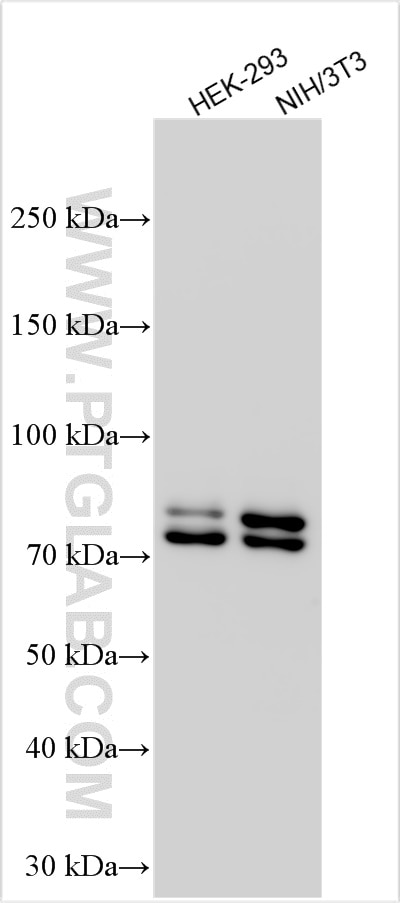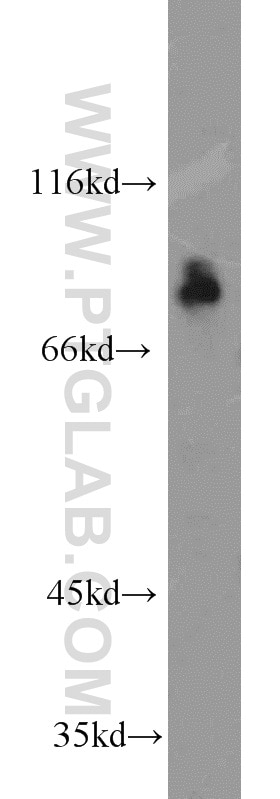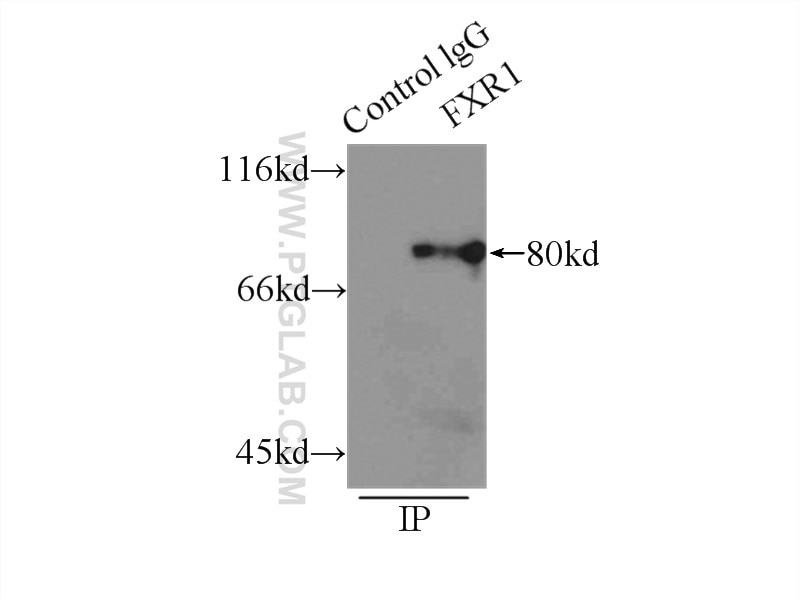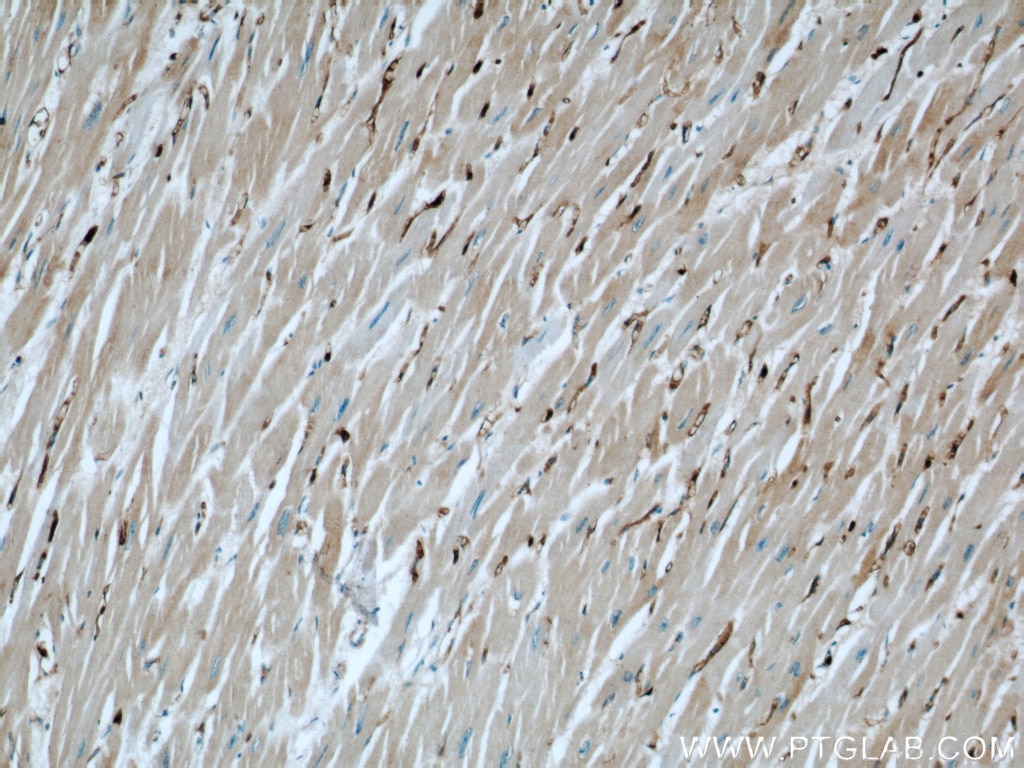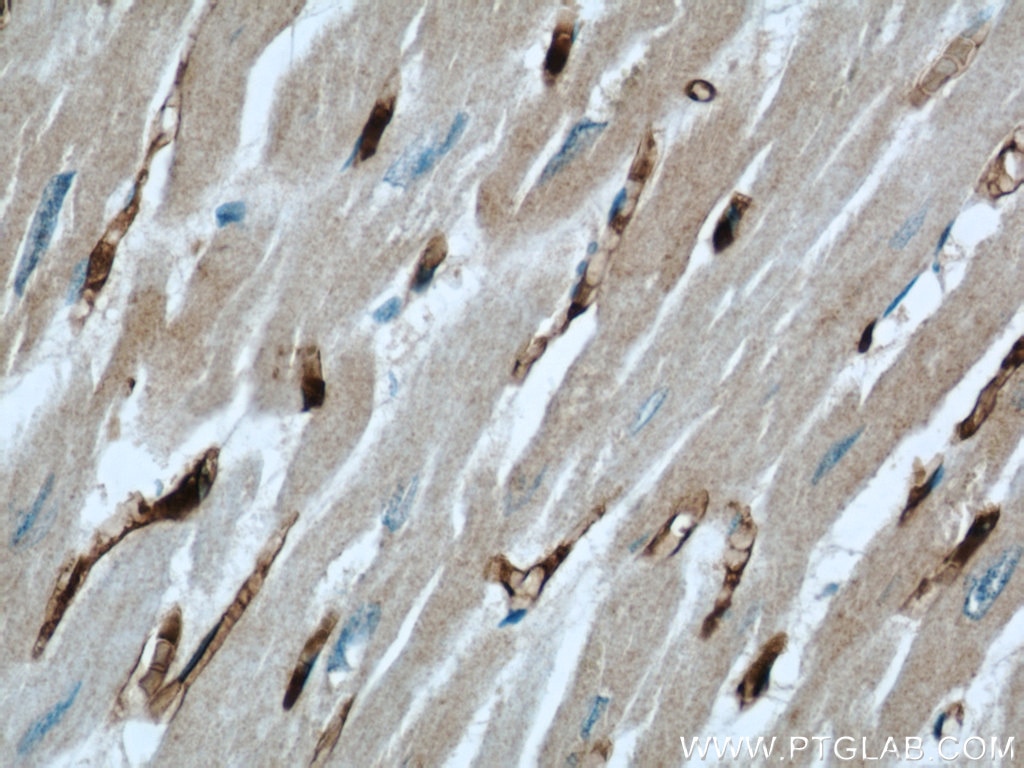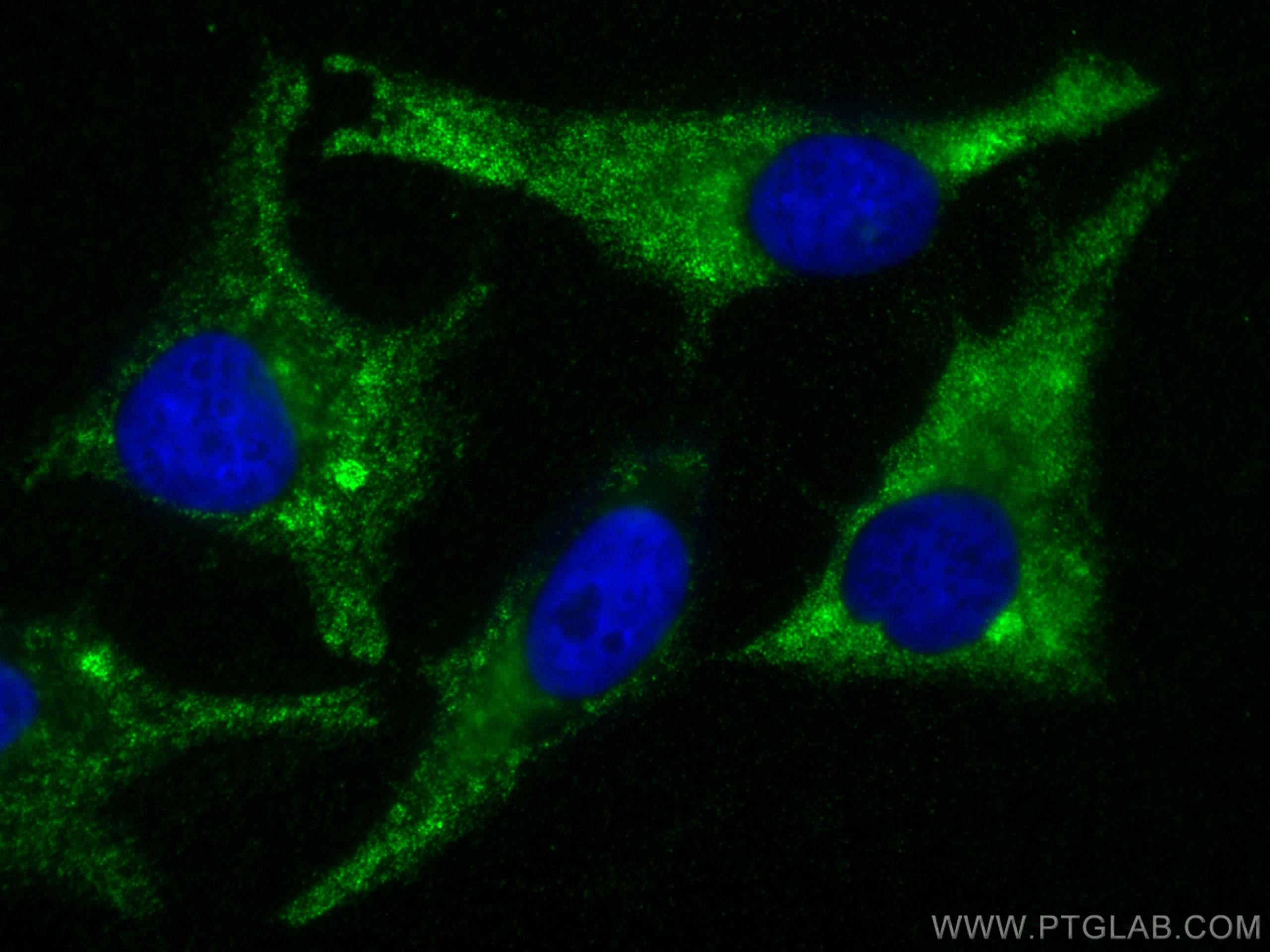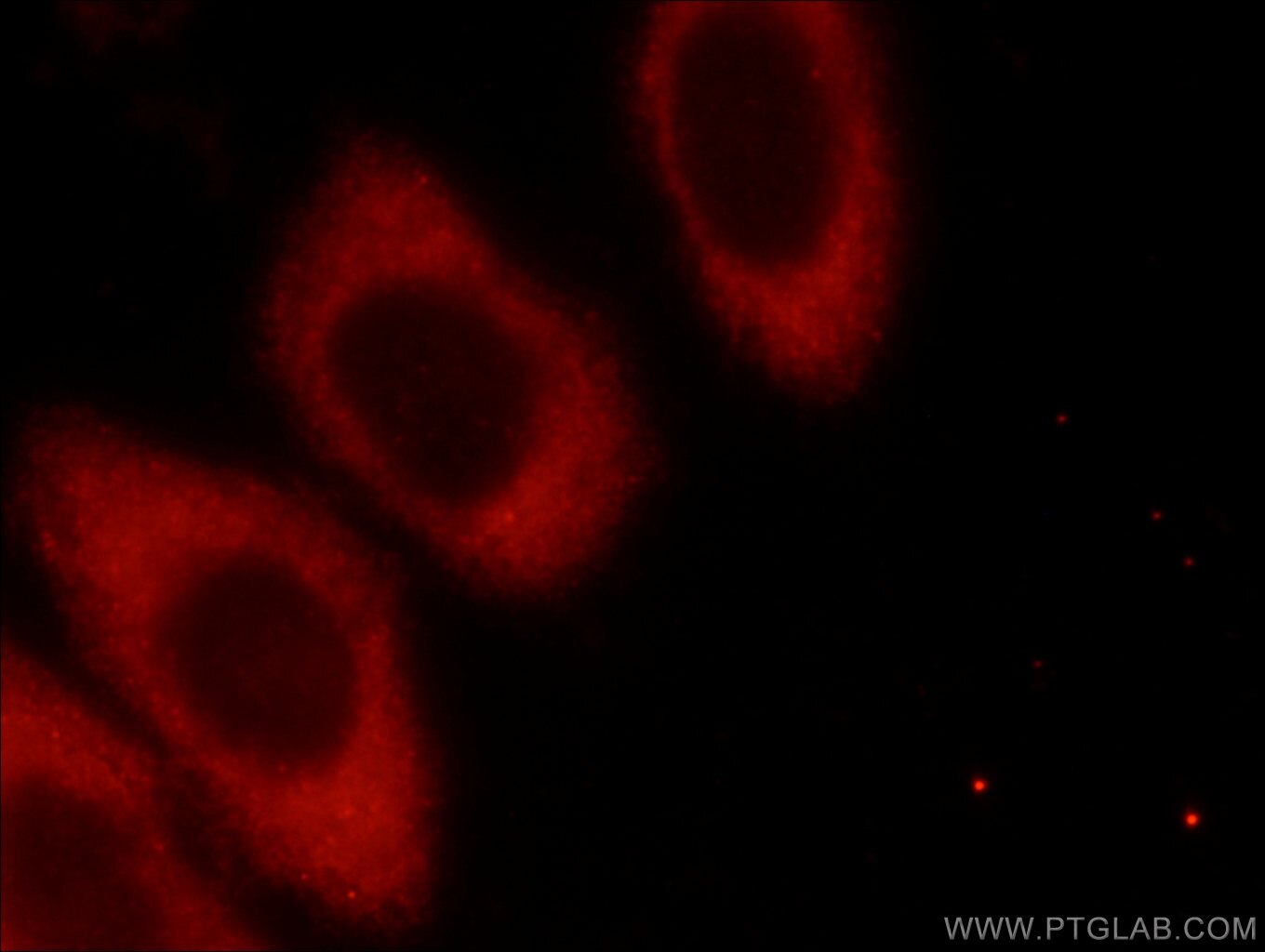- Phare
- Validé par KD/KO
Anticorps Polyclonal de lapin anti-FXR1
FXR1 Polyclonal Antibody for WB, IHC, IF/ICC, IP, ELISA
Hôte / Isotype
Lapin / IgG
Réactivité testée
Humain, souris et plus (2)
Applications
WB, IHC, IF/ICC, IP, RIP, ELISA
Conjugaison
Non conjugué
N° de cat : 13194-1-AP
Synonymes
Galerie de données de validation
Applications testées
| Résultats positifs en WB | cellules HEK-293, cellules NIH/3T3, tissu cardiaque de souris |
| Résultats positifs en IP | tissu de muscle squelettique de souris |
| Résultats positifs en IHC | tissu cardiaque humain, il est suggéré de démasquer l'antigène avec un tampon de TE buffer pH 9.0; (*) À défaut, 'le démasquage de l'antigène peut être 'effectué avec un tampon citrate pH 6,0. |
| Résultats positifs en IF/ICC | cellules HeLa, cellules HepG2 |
Dilution recommandée
| Application | Dilution |
|---|---|
| Western Blot (WB) | WB : 1:5000-1:50000 |
| Immunoprécipitation (IP) | IP : 0.5-4.0 ug for 1.0-3.0 mg of total protein lysate |
| Immunohistochimie (IHC) | IHC : 1:50-1:500 |
| Immunofluorescence (IF)/ICC | IF/ICC : 1:200-1:800 |
| It is recommended that this reagent should be titrated in each testing system to obtain optimal results. | |
| Sample-dependent, check data in validation data gallery | |
Applications publiées
| KD/KO | See 7 publications below |
| WB | See 20 publications below |
| IHC | See 1 publications below |
| IF | See 6 publications below |
| IP | See 3 publications below |
| RIP | See 2 publications below |
Informations sur le produit
13194-1-AP cible FXR1 dans les applications de WB, IHC, IF/ICC, IP, RIP, ELISA et montre une réactivité avec des échantillons Humain, souris
| Réactivité | Humain, souris |
| Réactivité citée | rat, Humain, porc, souris |
| Hôte / Isotype | Lapin / IgG |
| Clonalité | Polyclonal |
| Type | Anticorps |
| Immunogène | FXR1 Protéine recombinante Ag3873 |
| Nom complet | fragile X mental retardation, autosomal homolog 1 |
| Masse moléculaire calculée | 621 aa, 70 kDa |
| Poids moléculaire observé | 70-80 kDa |
| Numéro d’acquisition GenBank | BC028983 |
| Symbole du gène | FXR1 |
| Identification du gène (NCBI) | 8087 |
| Conjugaison | Non conjugué |
| Forme | Liquide |
| Méthode de purification | Purification par affinité contre l'antigène |
| Tampon de stockage | PBS with 0.02% sodium azide and 50% glycerol |
| Conditions de stockage | Stocker à -20°C. Stable pendant un an après l'expédition. L'aliquotage n'est pas nécessaire pour le stockage à -20oC Les 20ul contiennent 0,1% de BSA. |
Informations générales
Tumour necrosis factor-alpha (TNF-alpha) is a key mediator of inflammation in host defence against infection and in autoimmune disease. Its production is controlled post-transcriptionally by multiple RNA-binding proteins that interact with the TNF-alpha AU-rich element and regulate its expression; Fragile X mental retardation-related protein 1 (FXR1) is one of these. FXR1 (fragile-X-mental retardation-related protein 1) are RNA-binding proteins that have been demonstrated to impact miRNA-mediated, post-transcriptional gene regulation, and required for embryonic and postnatal development of muscle tissue. It can regulate intracellular transport and local translation of certain mRNAs. The FXR1 exists some isoforms with the MW 69 kDa and 60 kDa.
Protocole
| Product Specific Protocols | |
|---|---|
| WB protocol for FXR1 antibody 13194-1-AP | Download protocol |
| IHC protocol for FXR1 antibody 13194-1-AP | Download protocol |
| IF protocol for FXR1 antibody 13194-1-AP | Download protocol |
| IP protocol for FXR1 antibody 13194-1-AP | Download protocol |
| Standard Protocols | |
|---|---|
| Click here to view our Standard Protocols |
Publications
| Species | Application | Title |
|---|---|---|
Cancer Cell Integrative plasma and fecal metabolomics identify functional metabolites in adenoma-colorectal cancer progression and as early diagnostic biomarkers
| ||
Cell Competing Protein-RNA Interaction Networks Control Multiphase Intracellular Organization. | ||
Adv Sci (Weinh) The Spatial-Temporal Alternative Splicing Profile Reveals the Functional Diversity of FXR1 Isoforms in Myogenesis | ||
Adv Sci (Weinh) Primate-Specific DAZ Regulates Translation of Cell Proliferation-Related mRNAs and is Essential for Maintenance of Spermatogonia | ||
Neuron Fmr1 KO and fenobam treatment differentially impact distinct synapse populations of mouse neocortex. | ||
Nat Commun Microtubule-based transport is essential to distribute RNA and nascent protein in skeletal muscle |
Avis
The reviews below have been submitted by verified Proteintech customers who received an incentive for providing their feedback.
FH Chao (Verified Customer) (01-30-2020) | Western blot show strong band in the basal state.
|
